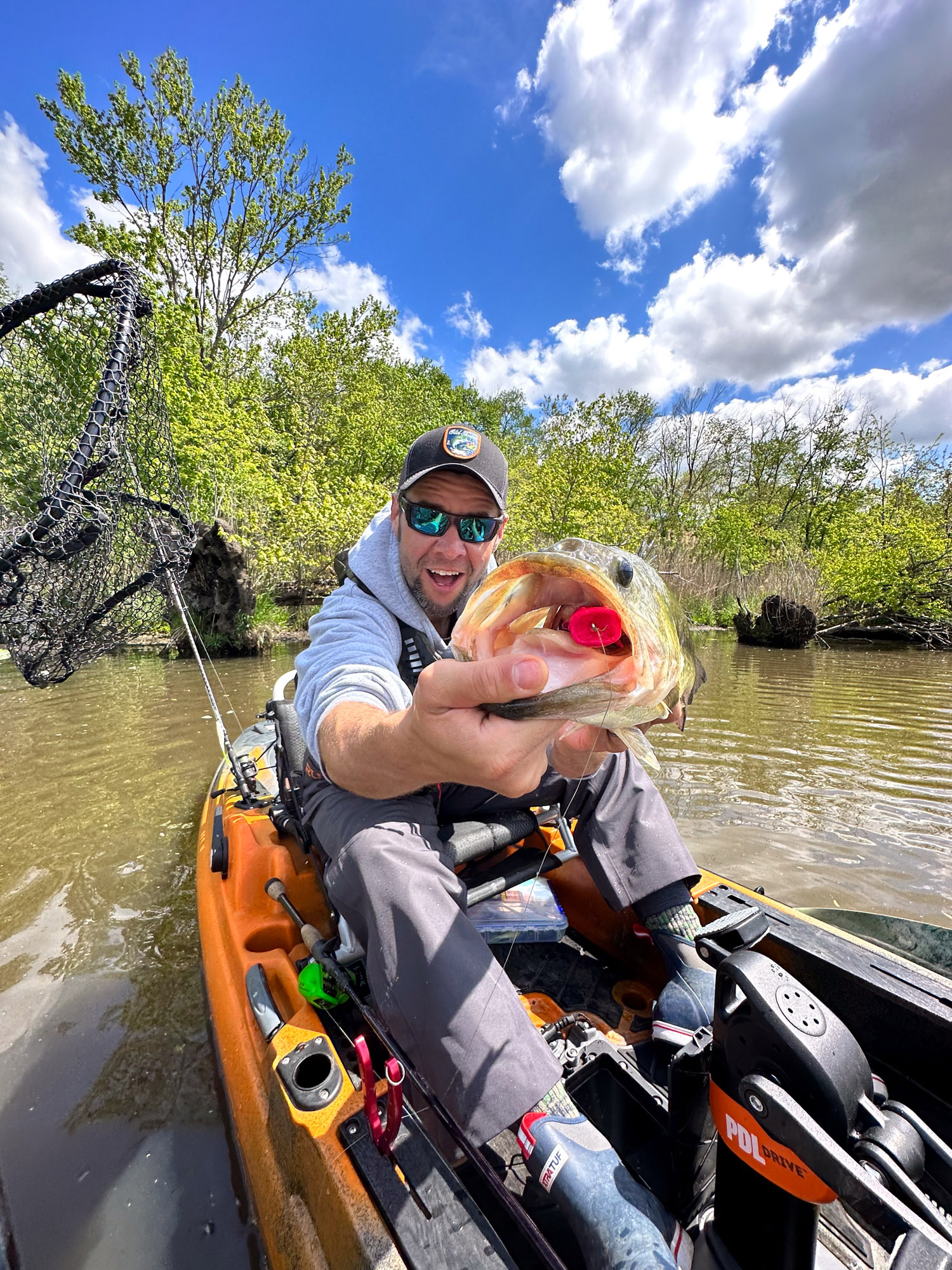Big fish eat little fish. The entire sport of angling is predicated on this natural fact. If predatory fish survived any other way, people like Lauri Rapala and Fred Arbogast would never have become icons. And, seeing how much the tackle industry thrives on lure sales, fishing would not likely be as popular as it is today.
But the piscatorial food chain does a lot more than sell baits. A healthy, balanced ecosystem — one in which you have a legitimate shot at catching a trophy — can only exist when big fish are eating just the right number of little fish. Take all the big fish out of the equation and, in many cases, you ruin the potential of a body of water; get rid of all the little fish and, well, the big fish that remain won’t be around for long. This problem is currently making headlines at an Illinois fish farm, and it’s an issue that’s both comical from a fishing perspective, but tells us a lot about how, where, and why we catch larger bass.
Mix & Match
Did you know that largemouth bass are winding up on beds of ice chips inside glass fish market cases more and more lately? It seems to be flying under many radars, but it’s true. It turns out bass are not only easy to rear in farms and sustainable, but the demand for them on the table is growing. According to this video overview of one Illinois-based farm (above), most of their fish are sold to Canada and around the New York City area. Illinois bass farmers, however, are losing profits due to a Hannibal Lector-esque snag: cannibalism.
According to the story on Kfvs12.com, a research team from Southern Illinois University has been called in to help farmers come up with the best plan for separating the fish once they’re moved from tanks to the vast outdoor holding ponds. The problem is that bass simply don’t all grow at the same rate. Even if you start out with like-sized fingerlings in a tank, their feeding habits will vary just enough that they won’t all grow evenly. This is not a huge deal at small sizes while confined to tanks, but guess what happens when mixed-sized fish meet up in those outdoor ponds? Let’s just say there’s a reason why the popular “Baby Bass” pattern has been getting slapped on crankbaits for decades.
The researchers are still working on a separation strategy that doesn’t require farmers to invest in a lot more room, but in the meantime, as researcher Koaw Zaczek put it, the “product is basically eating itself.” So, what does this teach us about catching bigger bass? A lot.
Recognize a Stunt
Fishermen enjoy catching lots of fish. The ideal day, then, is to catch lots of big fish, but for most bass anglers, that’s rare. Perhaps if your home water is Lake Okeechobee, Toledo Bend, Lake Falcon, or Lake Casitas, it happens for you more often. But if you were to throw a dart at a U.S. map and research bass water in that area — from county park lakes to farm ponds — it’s very likely you’ll find a spot or three loaded with bass but where a 2-pounder would be a monster. Within a 10-mile radius of my own home in Pennsylvania, I could hit six ponds where I’ll catch north of 20 bass on any given day, but none of them will put a serious bend in my rod. Sound familiar? It’s a product of stunting.
Stunting occurs when a closed body of water has too many small fish competing for limited food sources. There simply isn’t enough protein to go around and let them fully grow. In most cases, there is also a lack of big bass that gobble up little bass. Sadly, in most of those six ponds I mentioned, there are no big fish because anglers have removed them all. This happens all the time. There is a simple solution, but anglers’ hands are largely tied when it comes to execution.
Find Your Balance
Not long ago a college buddy reached out and told me his parents had just moved into a new neighborhood with a large pond. While the bass fishing was very good there, all the fish were small. He wanted to know if I had any advice for catching big ones. “Start killing the small ones,” I said, with my tongue squarely in my cheek.
We are, of course, bound by law. Gamefish have size and bag limits we must adhere to, but when it comes to popular species like bass, the idea of getting rid of a lot of them to create a better fishery in the long term doesn’t sit well with every angler. I think it’s because too many fishermen would rather catch a pile of fish than a couple bigger ones. People also aren’t that patient — the payoff from culling, even if state-sanctioned, can take years to materialize. Then you still must hope the nicer fish landed down the road go back in the water and not in a bucket, or else the cycle starts over again. What I’m not suggest here is going rogue on the local bass pond and starting your own future lunker program. But what I am suggesting is that if you want to catch nicer fish, you need to go to the places that are balanced, which often means places that make you work harder for your bites.

Balance equals harmony, and it’s so easy for a system to be thrown out of whack for a plethora of reasons ranging from fishing pressure to climate change to pollution. In some cases, invasive species can play a role. Northern snakeheads, as an example, are a scourge to many bass anglers throughout the Mid-Atlantic and Northeast. There’s no doubt they shouldn’t be here and can negatively affect a body of water, but I’ve also seen their presence turn areas with stunted bass populations around. Locations where I routinely caught nothing but loads of 1-pound or smaller fish now produce fewer bass but more weighing 3 pounds or better in the approximately 12 years since the snakeheads showed up. That’s not to say invasives are the answer, but it does illustrate the point that balance breeds bigger fish. The snakeheads feed on smaller bass and the bass feed on the protein-rich snakehead fry.
Read Next: The Best Bass Fishing Rods, Tested and Reviewed
I suppose whether you think that scenario is a good or bad thing depends on whether you like lots of fish or focus on big fish, but I for one don’t mind the occasional 5-pound largemouth taking a shot at my frog in areas where no such hogs existed years ago.
Read the full article here




